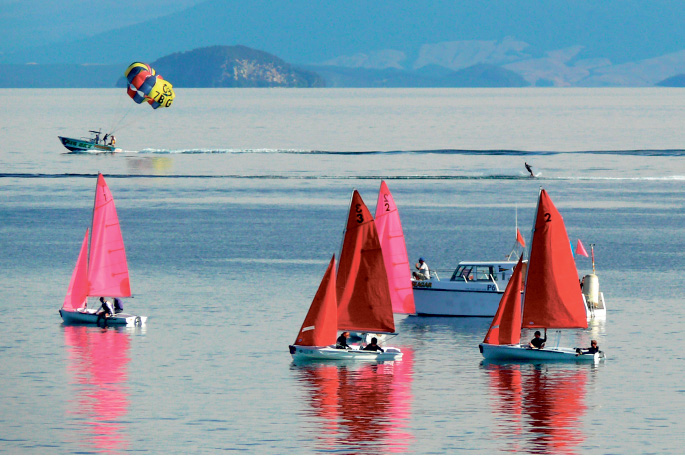We are truly blessed to live in New Zealand or Aotearoa - The land of the long white cloud.
However this beautiful country of ours is also the land of water. Wherever you are, you are never far from water. We are world famous for our stunning waterways – our lakes, rivers and beaches. However, it is important to always remember water can be dangerous and to be aware of the risks.
Whenever you are near a waterway in New Zealand, considering going for a swim, collecting seafood or going paddling or boating it is vital that you think about water safety.
Drowning is the leading cause of recreational death and the third highest cause of accidental death in New Zealand. In 2018 there were 66 preventable drowning fatalities. The five year average (2013 – 2017) is 82.
The most deaths in 2016 were from accidental immersions; people who have ended up in situations in the water they never intended too. This shows how dangerous and unpredictable it can be.
Swimming was the deadliest recreational activity. Too many people continue to underestimate the risks and overestimate their ability when it comes to swimming.
New Zealand’s drowning rate per 100,000 of population is twice that of Australia and four times that of the UK. Too many people drown unnecessarily in this country every year. Most preventable drowning fatalities are preceded by an error of judgement – a bad decision that has led to a loss of life. As a baseline we would like everyone to remember the water safety code (as pictured above).
A high number of drowning fatalities happen when people undertake an activity in, on or near the water by themselves. You must always think to yourself “what will I do if something goes wrong? Will anyone be able to help me?” Always take a buddy and make sure you have the correct safety equipment and know the risks involved.
When you’re out boating always wear a well fitted lifejacket and remember to check the forecast. Take two waterproof forms of communication and If you’re the skipper you’re legally responsible for those on board. Double check all your gear is in good working order.
There are other times when lifejackets should be used. If you are fishing from rocks or collecting seafood even in waist deep water, even if you are a strong swimmer. If you get caught in a rip or a rogue wave washes you off the rocks and into the sea a lifejacket will keep you afloat and help you conserve energy until you can be rescued.
Stand Up Paddle boarding has become a popular activity around New Zealand. This is another activity when you should wear a lifejacket and use the correct leash for the conditions. For example an ankle leash is dangerous when you’re in moving water. Go to nzsup.org for more info.
When you’re thinking about jumping into water always check for hidden objects. Read any warning signs and get local knowledge. Never assume it is safe. While waterfalls may look inviting they are dangerous. Like rivers they can have strong currents and undertows and are unpredictable. If in doubt stay out.
At the beach always try and swim between the flags. There has never been a drowning fatality between the flags on a patrolled beach. While our isolated beaches are beautiful there are rips and undertows and you can get into trouble even in knee deep water.
If you get caught in a rip current try to relax, float on your back and raise your arm to signal you need help and call out. If you panic and try to swim against it, you will drain your energy. Float with the current until it weakens and swim parallel to the beach before heading for shore. If someone with you gets into trouble do not enter the water to help without some kind of flotation device.
If you have under-fives with you around water remember, to keep them safe they need constant active adult supervision at all times. Keep them within arms-reach. It only takes a minute for a child to drown.
If you’re returning to scuba diving after a lay-off go and get a medical check form your GP. Always double check your equipment. Take a buddy and use dive flags.
We want everyone to enjoy New Zealand’s beautiful waterways - but safely. If you’re taking part in an activity in, on or near the water think about water safety at all times. It could save your life and the lives of your loved ones.
For more water safety information head to www.watersafety.org.nz
WSNZ is trying to tackle our drowning problem at the grassroots through Water Skills for Life. Learn more at www.waterskills.org.nz
WSNZ is also launching a regional water safety strategy in Bay of Plenty. Learn more at https://watersafety.org.nz/bop%20water%20safety%20regional%20strategy



0 Comments
Leave a Comment